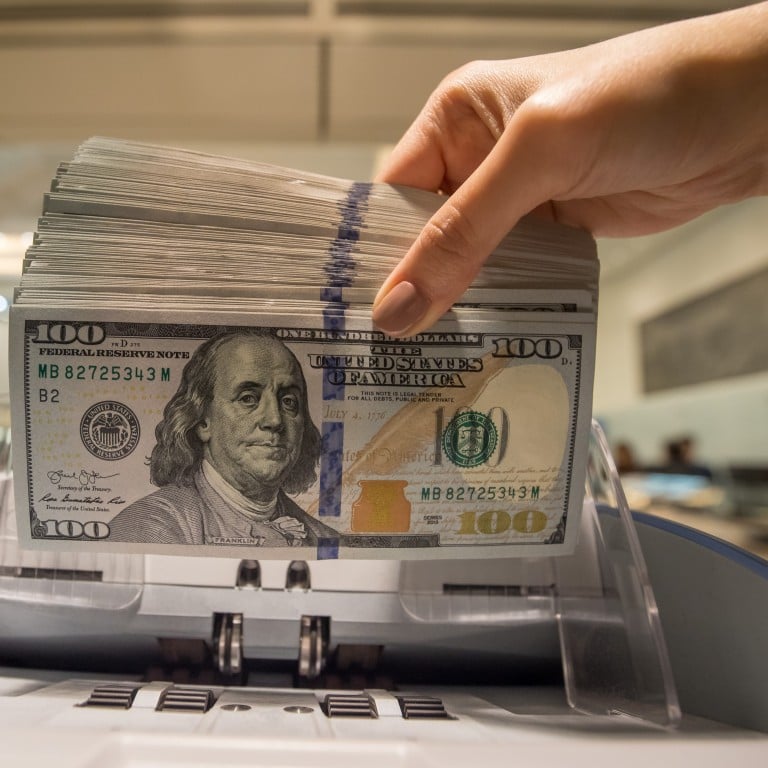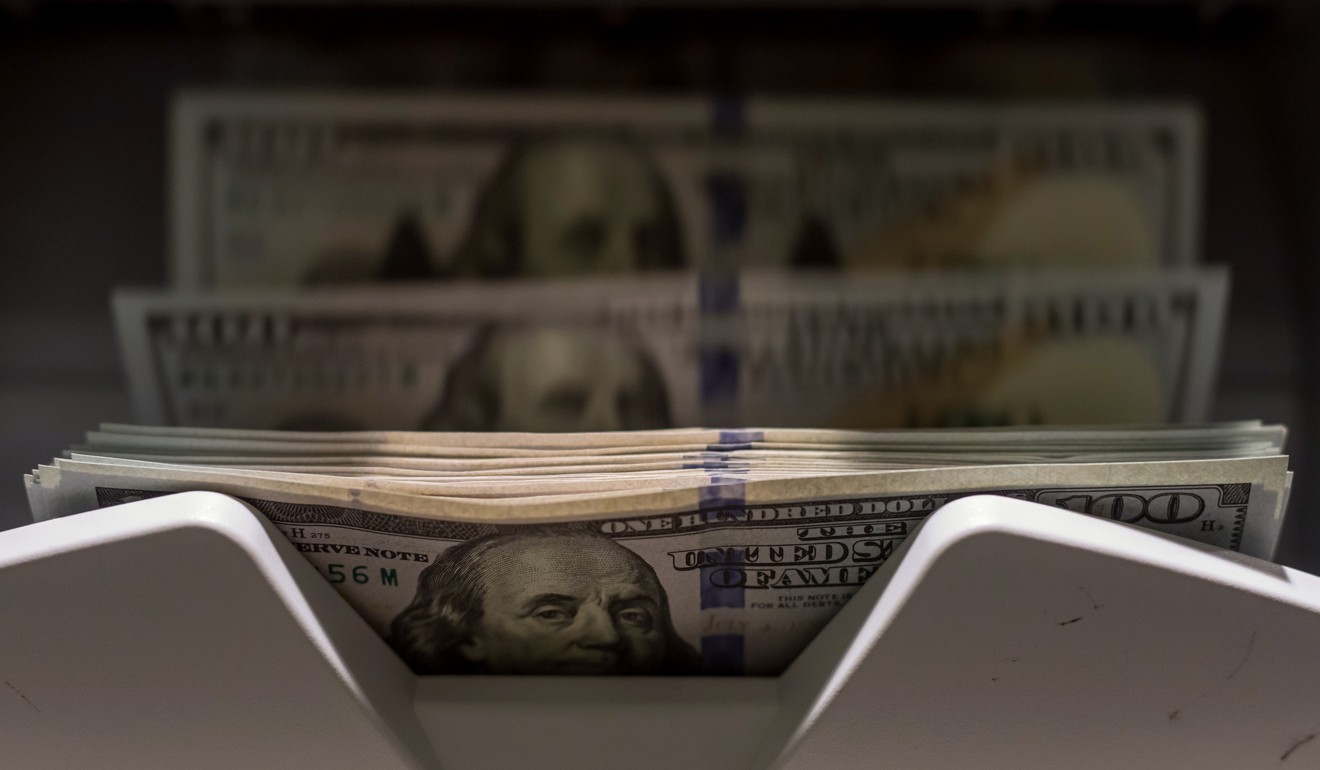
Does China have enough US dollars to survive the US trade war?
- China’s US$3.1 trillion in foreign exchange reserves may not be sufficient to support a crisis in the economy, analysts say
- Authorities have kept foreign reserves stable at around US$3.1 trillion since burning through almost US$1 trillion between mid-2014 and 2017 to defend the yuan
This is the first article in a three-part series looking at China’s US dollar shortage risks amid the trade war with the United States as it plans to reform and internationalise its economy.
The Chinese government is officially sitting on the world’s largest stockpile of foreign exchange reserves, but it has been scrambling recently to block backchannels for capital outflows as trade tensions with the United States increase.
Beijing’s increasing scrutiny of the usage of the US dollar by Chinese companies and individuals, in the absence of any immediate signs of a financial crisis, along with accelerating efforts to lure in foreign capital, have raised suspicions among analysts that the world’s second-largest economy is worried about the risk of running short of the US dollar.
On the surface, China should be the last country in the world to worry about a shortage – about two-thirds of its US$3.1 trillion worth of foreign exchange reserves, the world’s largest, are believed to be held in US dollar-denominated assets.

But the huge foreign reserves and a relatively stable currency do no reflect the true stresses underlying the economy, analysts said, because the concerns are that those reserves may not be enough to provide the safety buffer needed to pay for China’s imports and pay off its debt in adverse circumstances if the yuan faced a devaluation or a sharp drop in value.
Analysts, though, doubt that China would be subject to an imminent balance of payment crisis similar to the one that Argentina experienced last year. The Latin American country was hit by a currency crisis and stagflation because of structural deficiencies that constrained real demand and prevented the economy from growing sustainably.
“If there was a sudden shock to the country, China would not have enough US dollars to support its own currency,” said Kevin Lai, chief economist for Asia excluding Japan, at Daiwa Capital Markets. “So that is why China needs to stop money outflows while creating inflows to support the yuan.”
Like money of other sovereign nations, the yuan is backed by its foreign exchange reserves, which are largely invested in US Treasury securities. The People’s Bank of China – the country’s central bank – might need those assets not only to prop up the yuan by intervening in the foreign currency market, but also to bail out the domestic banking system.
If there was a sudden shock to the country, China would not have enough US dollars to support its own currency
The risk is that if China’s capital controls are ineffective, the exodus of funds and a portion of China’s reserves are not easily converted into cash, then the central bank will soon have insufficient funds to maintain currency stability.
Ever since US President Donald Trump started imposing tariffs on Chinese imports in July last year, there have been worries about a sharper-than-expected slowdown of China’s economy, which would accelerate capital outflows and reduce the supply of US dollars in the domestic financial system.
But policymakers worry that by digging further into its savings, even just letting foreign reserves fall below the psychologically important US$3 trillion level, could invite market speculation and set off a vicious cycle of sharp capital outflows and currency depreciation. Authorities have kept foreign reserves stable at around US$3.1 trillion since burning through almost US$1 trillion between mid-2014 and 2017 to defend the yuan.
China’s reserves are now less than 30 per cent of its gross domestic product (GDP), down from 48 per cent in 2010. At the same time, the country’s external debt ballooned to an all time high of US$1.97 trillion last year. This means its US$3.1 trillion in foreign reserves is about 1.6 times of its external debt and would be enough to cover 12 months of goods and services imports.
China’s underlying vulnerability is especially opaque because the government is the ultimate holder of nearly all corporate debt. State-owned enterprises and other public entities enjoy implicit guarantees from the government and other forms of preferential treatment, so even though corporate bond defaults hit a record high last year, the ratio remains at a relatively low 1 per cent of outstanding bonds.
Total Chinese bond issuance rose to US$1 trillion in 2018, up from US$927 million in 2017 and US$774 million in 2015, according to data from Dealogic. At the same time, corporate debt in China stood at 155 per cent of GDP in the second quarter of 2018, much higher than in other major economies and unlikely to be sustainable, said the Organisation for Economic Cooperation and Development. By comparison, Japan’s corporate debt level is 100 per cent of GDP, and that of the US is 74 per cent.
As the trade war with the US escalates, the government is quietly tightening outbound money flows further, although according to Chinese law, citizens are allowed to withdraw as much as US$50,000 a year.

An apparent reflection of the tighter supply of US dollars and their rising costs, China’s US dollar interest rate for one-year deposits implied by the yuan exchange rate has risen steadily to around 3.4 per cent from 2.4 per cent last August, according to Thomson Reuters data.
“I always support capital account controls, and I always encourage such measures. But sometimes we tend to be too extreme in doing things,” Yu was quoted as saying by Chinese news portal Sina.com. “Legal foreign exchange deals are being hindered.”
In a statement replying a request by the Post, SAFE said it “full guarantees true and legal foreign exchange uses by individuals” and every Chinese citizen in China is entitled to the right to buy up to US$50,000 worth of foreign exchanges a year.
The regulator added that there’s no age limit for dollar purchases.
The second instalment will explain why the US dollar access is so restrained in China.

